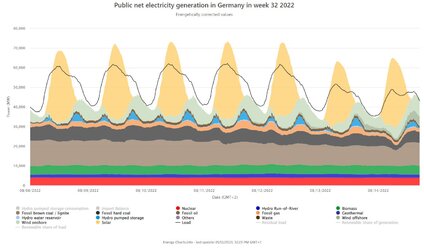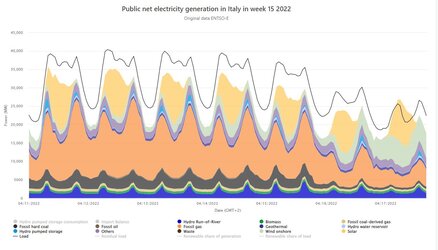So I wanted to make this post for a while, but the main website I use does not have the annual update so it can't be helped.
Just keep one thing in mind when it comes to energy economics. You can only fool someone once in their lifetime.
I will focus on electricity in the European Union since that's where I am somewhat in my depth of topic. This does exclude other areas where energy is mostly used. Meaning:
1. Transportation
2. Heating
3. Industrial processes
The electrification of these areas is in process but will take some time. But each EV, each heatpump and each P2G/P2X facility is pushing the very product out that is exported by Russia. So let's compare 2021/2022.

| Energy Source in TWh | 2021 | 2022 | Difference |
| Solar | 134 | 166 | + 32 |
| Wind (Off+Onshore) | 367 | 394 | + 27 |
| Hydro (Storage + Water) | 324 | 260 | - 64 |
| Nuclear | 698 | 580 | - 118 |
| Coal (Hard + Brown) | 399 | 423 | + 24 |
| Gas | 432 | 435 | + 3 |
The really hot summer in Europe reduced the water based production of electricity in most parts of Europe. In addition to that many nuclear power plants use the water of nearby rivers for cooling and thus were also negatively effected by the lack of water and high temperature.
When it comes to the difference in nuclear production you mostly have the beforementioned drought in the summer and the problems the French currently have with their nuclear power plant fleet. Many reactors show signs of corrosion damage and had to put off the grid for unplanned maintenance in addition to other plants being off the grid for planned maintenance.
The French nuclear power generation went from 359 TWh in 2021 to 278 TWh in 2022 alone. A difference of 81 TWh, which explains a large part of the total reduction in Europe. Add to that the drought and the shutdown of 3 reactors in Germany (Brokdorf, Grohnde, Gundremmingen C) in 2021 and it explains the total difference pretty decently.
Wind and Solar had a small increase and more coal was used for electricity generation. Gas usage remained mostly unchanged.
As a sidenote. The total production was down around 100 TWh. Made up by savings and the mild winter and thus low electricity use for heating.
This in the installed electricity generation capacity in Europe in 2021. The website still has not all the updated info for 2022. So that graph is currently not usable.

Most capacity addition happened in the renewable sector. Solar added another 41.4 GW in 2022, which is huuuuuge when the total in 2021 was at around 135 GW.
In another record year for solar, SolarPower Europe estimates PV in Europe grew by 47% in 2022, rising from 28.1 GW in 2021 to 41.4 GW this year. Germany installed the most with 7.9 GW, followed by Spain at 7.5 GW, and Poland at 4.9 GW. For the first time, the top 10 European solar markets all...

www.pv-magazine.com

Wind power added an additional 15 GW of electricity generation capacity, which is less than 10 % of total generation installed in Europe. But wind power takes longer to plan and a good chunk of European countries have relaxed the needed paperwork and regulations for that. So we might see bigger increases in the near future,
Last year Europe built 15 GW of new wind energy capacity. This is well short of the numbers we need to meet the EU’s climate and energy targets. So what’s holding us back? Permitting and supply chain challenges still loom large, and electricity market rules haven’t helped either. Can we expect...
windeurope.org
Solar + 41,4 GW
Wind + 15 GW
And that alone in a little bit over 10 months of time and that despite supply chain issues, which seem to become more and more revolved as time goes on.
This is important, because after all, each renewable capacity installations is reducing Europes dependance on Russia and makes more electricity available for the other areas (Transportation, heating, industrial processes).
Just so showcase is with the German/Italian electricity generation for different weeks in summer.


Germany has far more solar capacity installed than Italy and you can see how solar is pretty decently absorbing the load increase as people wake up, start working and so on and how it puts a little dent into the gas consumption. On the other hand Italy has little solar capacity installed. It's capable of absorbing a bit of the increase but especially in the morning/evning the flexible gas power plants have to be running.
If the trend in solar goes on. Italy will be way less reliant on gas, since the solar generation will start to replace gas more and more and Italy has way better solar potential than Germany. And Italy alone made up 117 TWh of gas derived electricity production in Europe in 2022. More than 25 % of Europes total.
I see an even higher increase of solar in 2023 and 2024. Wind will probably pick up a lot of speed starting at 2024. And if the capacity is installed, it will be very hard to convince people to go back to fossial consumption.
Russia literally shot themself in the foot when it comes to maintaining Europe as a potential energy customer.






